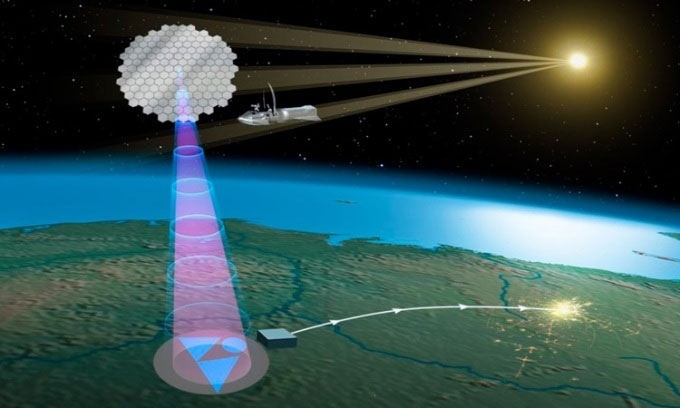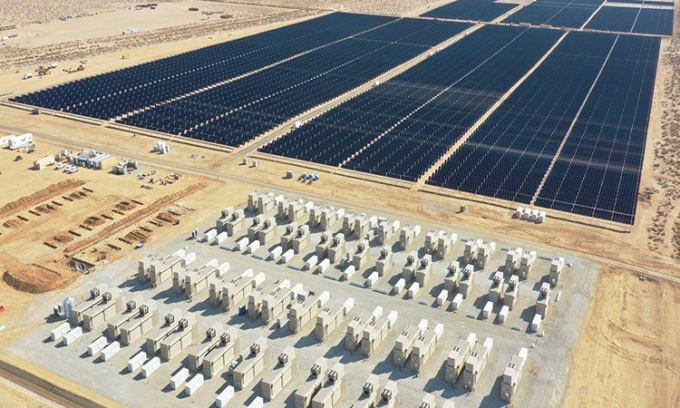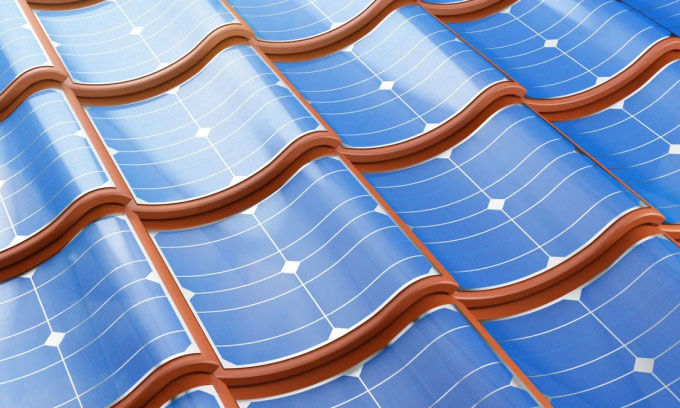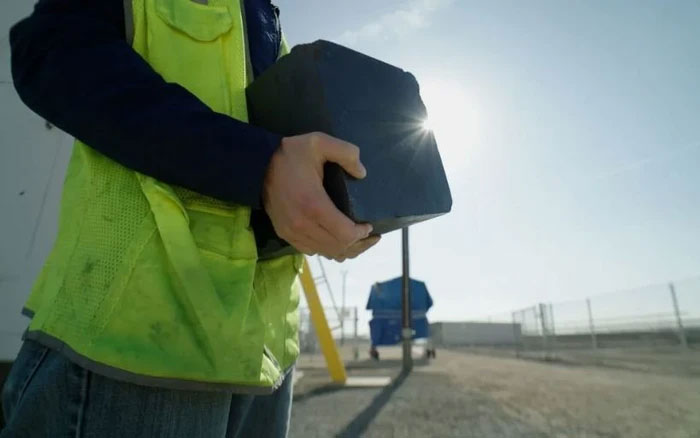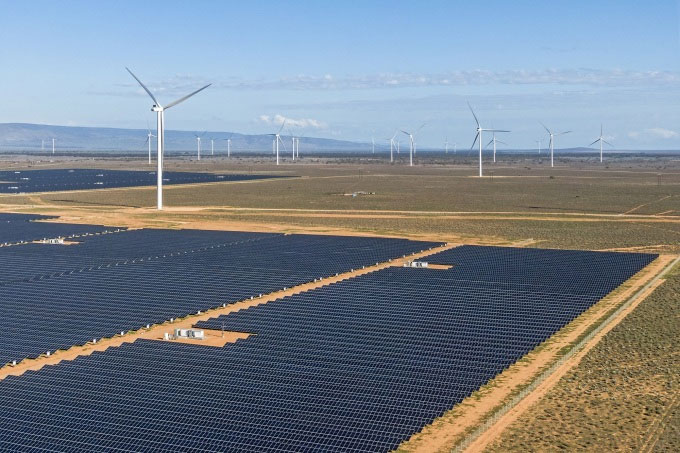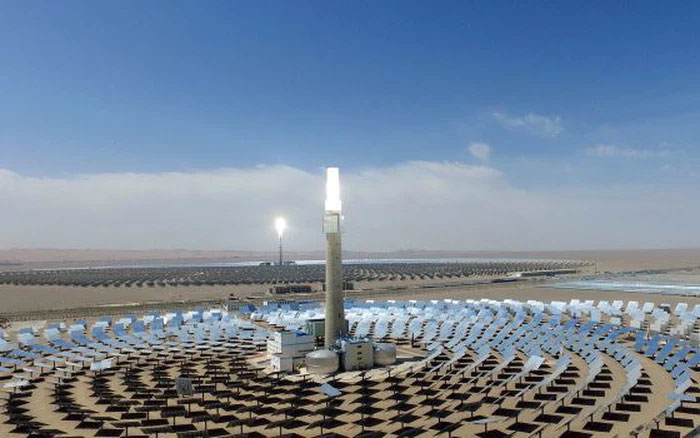Harvesting solar power in space is currently the goal of many countries around the world. Is this project feasible in the future green energy race?
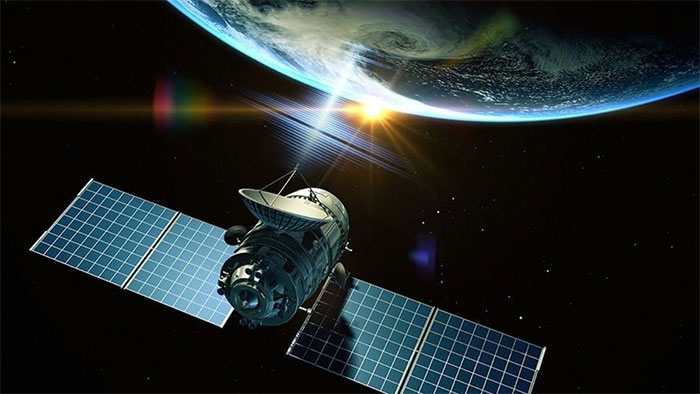

An American engineer proposed placing photovoltaic panels in orbit.
When scientist Charles Fritts invented the first photovoltaic cell in 1880, people expected a revolution in global electricity production. After all, there is no cheaper, cleaner and more widespread source of energy than sunlight.
Advances in technology are helping this area of green energy become more efficient and affordable. But to date, it still only provides nearly 5% of the world’s electricity.
Part of the reason for this is that there are still some limitations that slow down the expansion of solar energy, typically half of our planet is always in darkness due to the day-night cycle. This makes photovoltaic panels unable to produce energy continuously.
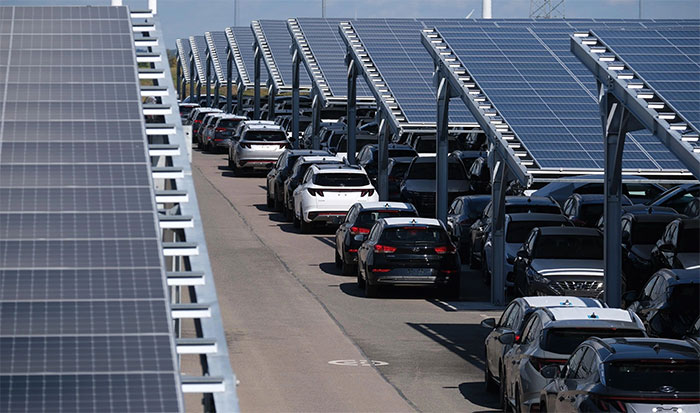
Ground-based solar stations are currently unable to produce electricity continuously. (Photo: Les Horizons).
Ideas to overcome this have been put forward by scientists since the 1960s. An American engineer, Peter Glaser, proposed a completely different solution: placing photovoltaic panels on orbit. religion.
There, above the clouds, Earth escapes the night cycle, flooded with sunlight. Humans just need to collect this light, convert it into energy and use it.
The energy is transmitted in the form of microwaves or lasers, towards rectifier antennas installed on the ground, we can obtain direct current. From there, the energy will be integrated into the power grid system around the world.
For a long time, the cost of launching into space and the performance of photovoltaic systems prevented Peter Glaser’s bright idea from becoming a reality. This is no longer the case, the concept of space solar power plants is gaining new momentum reflected in many projects in the United States, China, Japan and Europe.
In particular, it is of increasing concern at a time when the world is facing global warming and cutting CO2 emissions from thermal power plants is essential.
Building a power plant in space could be a way to get us into a green era faster.
To the future and beyond
In the United States, this plan is driven by the strong development of the space industry and threats from climate change, the US Aeronautics and Space Administration (NASA) is carefully reviewing the Project. Space Solar Energy Project (CSS for short) .
According to American policymakers, the situation has changed and the United States regularly reviews good ideas and keeps all options open. Every aspect of space technology is always of interest to the United States, looking towards the future
NASA pays great attention to these projects and considers implementing them, because the birth of CSS will affect many other missions of the space agency, because CSS projects require a lot of funding for testing and implementation. .
For NASA, that future could involve building CSS beyond Earth, to support the Artemis crew’s lunar exploration program. A solar power plant around the Moon would therefore help power inhabited outposts and various exploration activities on our satellite.
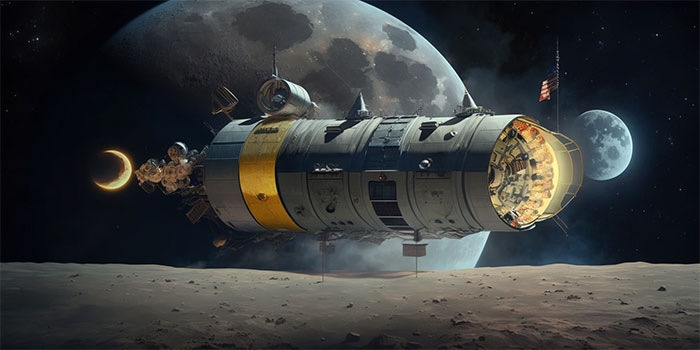
NASA has the idea of building a power plant in lunar orbit to provide energy for interplanetary exploration programs. (Illustration photo: Contrepoints).
Even more ambitious radiant power would be able to replace spacecraft propulsion, taking them to interplanetary or even interstellar destinations.
On Earth, some people see CSS as the ideal way to reduce greenhouse gas emissions to zero, while also benefiting economically from a regular, sustainable and abundant electricity supply.
Unlike solar power and terrestrial wind power, which cannot provide continuous electricity. CSS will operate continuously 24 hours a day, while allowing energy companies to distribute electricity flexibly and responsively to power grids around the world.
This is what makes it a very valuable new clean energy technology.
Mr. Martin Soltau, Chairman of the Space Energy Initiative (SEI) , UK pointed out: “Another advantage of this energy source is that it does not require rearranging the power grid. We are considering placing rectifiers near existing grid-connected stations, possibly next to offshore wind farms.”
SEI is a partnership between the government, the energy industry and scientists, and the goal is to build a fleet of CSS connected to the UK grid by 2040. Each machine will produce electricity almost equal to a coal or nuclear power plant.
However, the country has a long way to go and first it needs to do a lot of pilot tests before it can be put into practice. The starting point for this process is that SEI plans to launch its first orbital aircraft in 2030.
Martin Soltau explains: “The two most important technologies for testing in space are the automated robotic assembly of CSS structures and the energy transfer to Earth must reach significant levels. But many other questions remain.” important, especially regarding the regulations and radiation spectrum that will be applied”.
High-tech testing
SEI is not the only agency on the CSS path. Many projects are underway with major upgrades such as the Zhuri Project by scientists at Xidian University (China) and the National Academy of Space Technology exploring sunlight concentration technologies. and wireless power transmission.
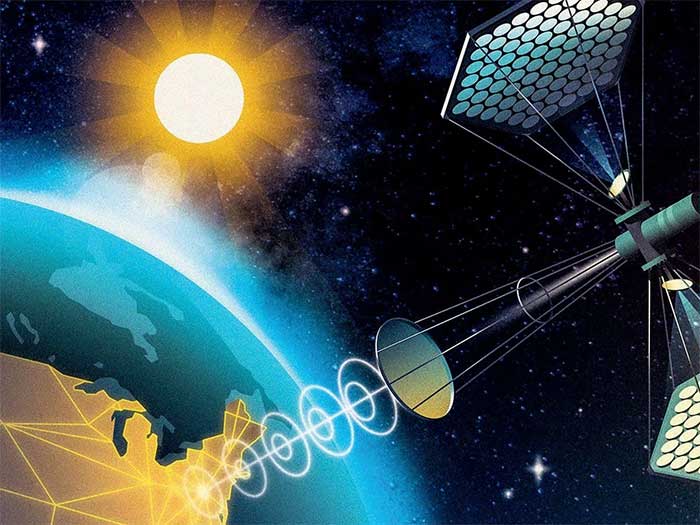
It consists of a 75-meter-tall steel tower, topped with a sphere-shaped solar energy collector (Omega), which is expected to one day be placed into geostationary orbit.
Or the European Space Agency’s (ESA) Solaris initiative , approved by the European Space Agency Council at ministerial level in November 2022. The three-year program aims to explore CSS concepts in detail.
In July 2023, Thales Alenia Space (Europe) was selected to conduct a feasibility study of the Solaris initiative. Meanwhile, researchers from the Japan Aerospace Exploration Agency (JAVA) have been studying CSS since the 1980s, and they hope this work will be completed within the next decade or two.
JAVA already has its own technology to improve the accuracy of emitted energy beams and collect technical data about CSS components.
In the United States, in addition to NASA, the Department of Defense is also very interested in CSS to provide energy for military operations and expeditionary forces around the world.
So the Air Force Research Laboratory, in partnership with Northrop Grumman Aerospace and the Naval Research Laboratory (NRL), recently conducted the first ground test of the Arachne device. .
Scheduled for launch in 2025, this particular mission is to demonstrate the ability to form and focus radio frequency beams in low Earth orbit. Also in the United States, a team from the California Institute of Technology successfully completed the first comprehensive CSS test in June 2023.
Meanwhile, the Naval Research Laboratory (NRL) has developed specialized modules, designed to increase the efficiency of converting solar energy into electromagnetic waves. A device combining these modules even spent more than 900 days in space aboard the US Air Force’s X-37B robotic spaceplane.
Overcome financial challenges
Scientist Paul Jaffe, from NRL explained: “The opposition to solar power projects in space is largely related to the economic issue of being too expensive. The world still has a lot of work to do to develop, testing this technology to prove it really works.”
Therefore, current experiments are sensible and wise before countries commit to developing more complete systems.
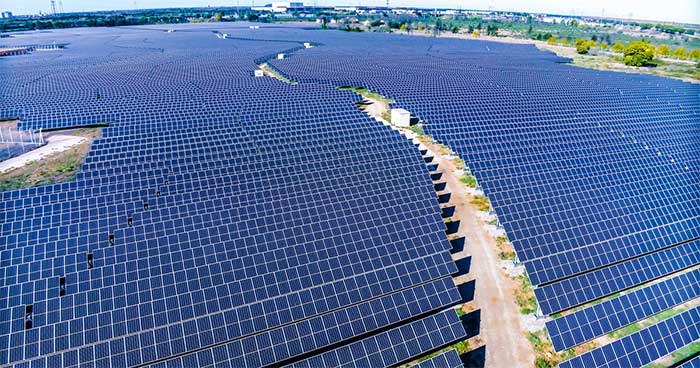
This technology must prove more effective in many aspects than wind and solar power projects on Earth before it can become a reality. (Photo: HSE).
These trials will likely cost hundreds of millions of dollars, he noted, and even with such initial funding, CSS will require strong, long-term support from national governments. Ultimately, it’s about ensuring that the cost is competitive with other energy solutions.
Scientist John Mankins, Chairman of the Standing Committee on Space Solar Energy, International Academy of Astronautics, expressed optimism about the feasibility of this project.
In the past, CSS projects have been hampered by three financial obstacles: the cost of building the device, the cost of adapting it to the space environment, and finally getting it into orbit. But these obstacles are about to be removed and CSS is entering a new era.
But not everyone has this view. Engineer Amory Lovins, Rocky Mountain Institute, US Energy Research Center criticized: “Launch costs are still a major obstacle, even if the launch price per kilogram of payload to low Earth orbit has been reduced by 20 times.” since the appearance of the reusable rocket Falcon 9, manufactured by SpaceX”.
According to Amory Lovins, the CSS concept remains attractive, but he believes that the growth of terrestrial renewable energy sources such as solar and wind, which have become very competitive, raises questions about its viability. its ability to exist.
A photovoltaic cell will always provide cheaper power when installed on a roof rather than in orbit.
- Building power plants in space?
- China’s ambition to build a 1MW solar power station in space
- Mysterious shifting light spot in a world identical to Earth

